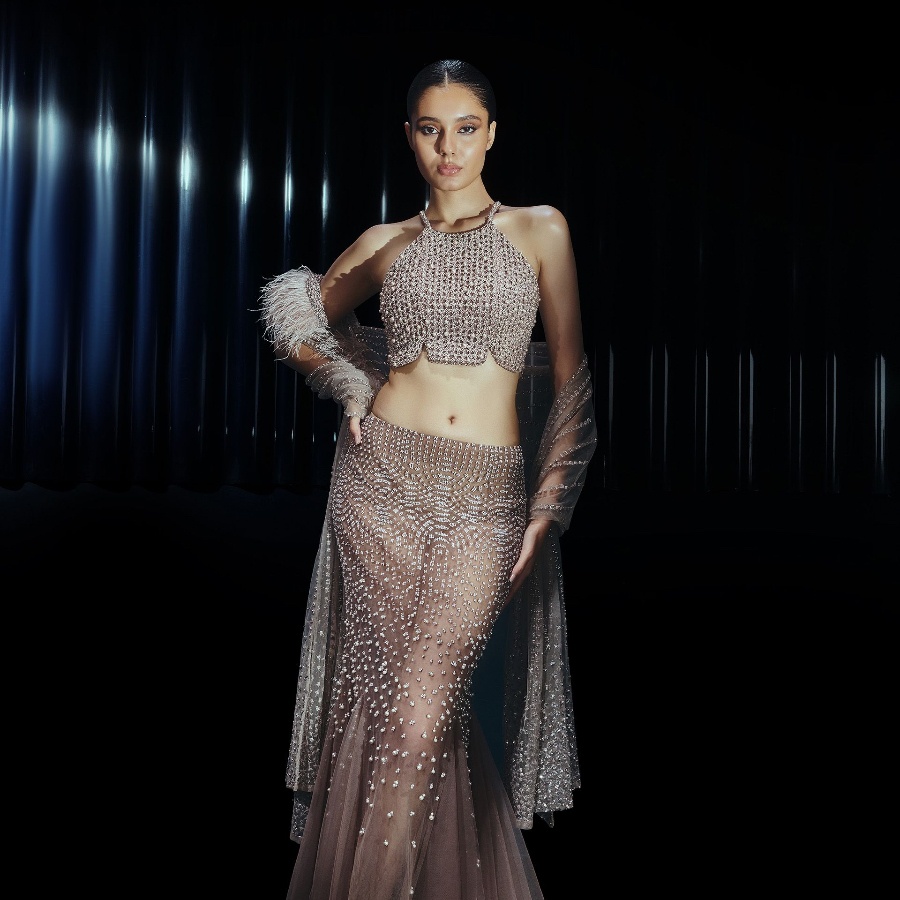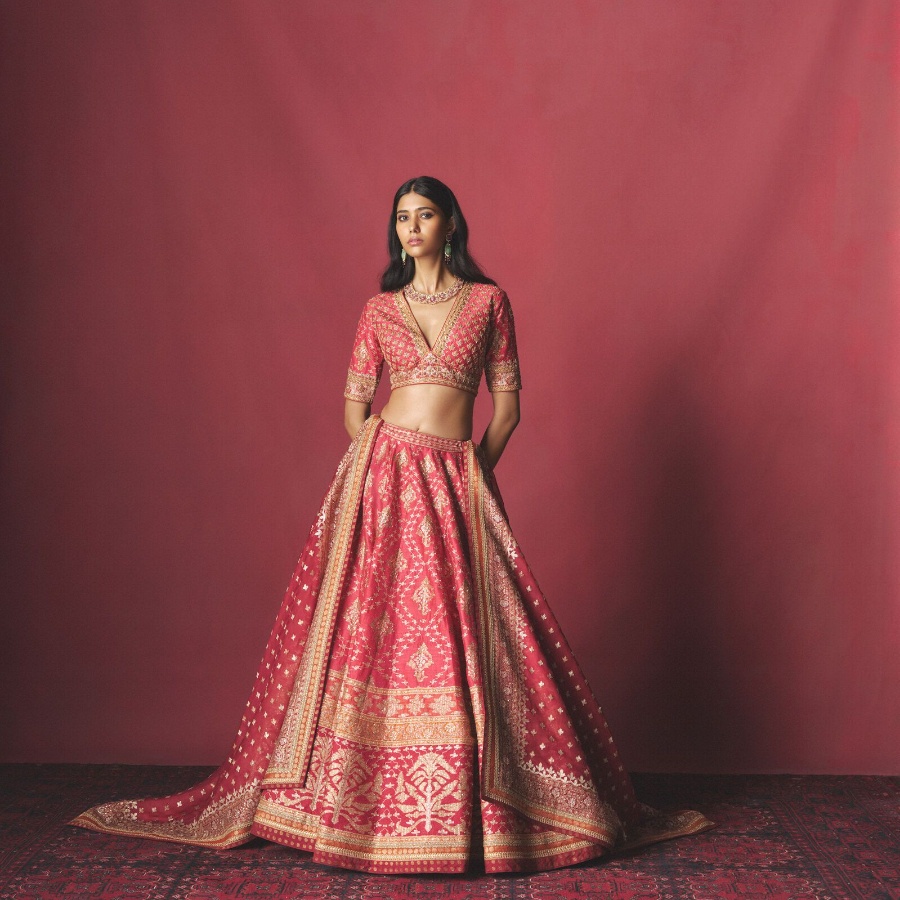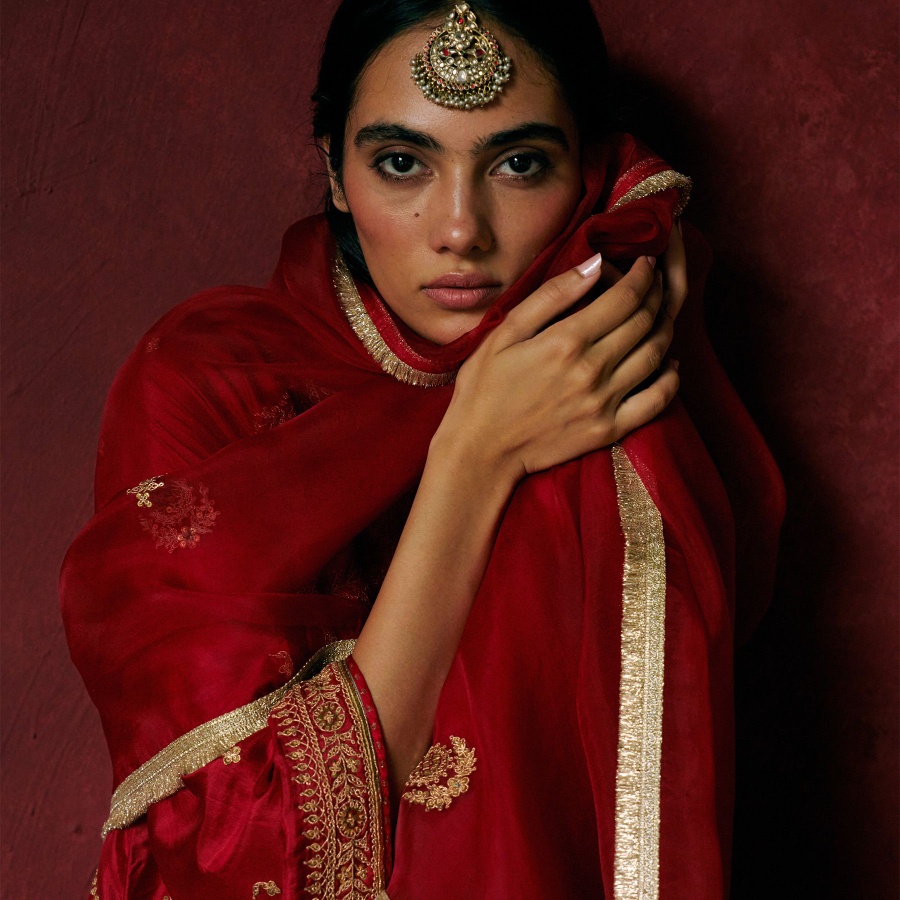The classic sindoori red is so deeply entrenched in the psyche of an Indian bride, that it can never quite be separated from weddings in this country. It’s like designer Sabyasachi Mukherjee famously said, “Red is not seasonal, it’s iconic.” Brides around the country echo this sentiment, but what’s a custom if not constantly evolving to reflect a moment in time? And, of late, there has been a rise in a newfound approach to the classic bridal hue.
It is believed brides in India first started to wear red during the Mughal era in the early 16th century, a colour largely associated with royalty and nobility. Many also believe that the significance of red in Hindu culture is tied to astrology, as a symbol of Mars, which is said to be the planet that rules marriage.
Millennial and Gen Z coded
But as millennial and Gen-Z brides rewrite rules that were handed down to them from the previous generations, one of the key changes is the radical shift in the bridal colour palette. “Brides are now breaking away from traditional reds, and leaning towards trying different colours, especially pastels, for their main wedding ceremony. But due to the auspicious nature of red, they still want to incorporate it in their wedding trousseau in some way,” says Tanya Vohra, founder of wedding styling service Clad, which has styled six to seven brides this year who embody this change. “I think it’s a lovely transition.”
Recent celebrity brides have given in to this change too. Alia Bhatt, who wore an ivory Sabyasachi sari for her pheras, chose an upcycled red lehenga by Manish Malhotra for her mehendi. Athiya Shetty, who wore an old-rose lehenga for her nuptials, did not shun red altogether either—she incorporated it by way of a red Lajjoo C anarkali and a sharara-cape set by her bridal lehenga designer, Anamika Khanna. One of the earliest pastel-clad Bollywood brides, Anushka Sharma, wore red in the form of a Benarasi sari for one of her reception parties as well.
It’s a preference that designer Arpita Mehta confirms witnessing among her clients. “Bridal red has expanded its capability in recent times and is being worn as beautiful tone-on-tone looks for the sangeet, cocktail night or pre-wedding dinner. The approach to this hue has become more versatile than ever before,” says Mehta, who dressed actor Rakul Preet in a sindoor-inspired palette of orange, red and pink for her mehendi.
Fiery appeal
The silhouettes one can experiment with are aplenty. Mehta suggests a sari styled with a traditional head dupatta and minimal hair and make-up. Vohra cites examples of her brides wearing embroidered red lehengas for their sangeets and mehendis. “Another client came to us with a vision to be a red bride but ended up going for an ivory-pista lehenga for her main ceremony. So, we dressed her in a simple red sari for her chooda ceremony and an embellished fishnet red sari for her cocktail hour,” the stylist adds.
Vedika Mohan, creative director of The Wedding Design Company, skipped red for her vow exchange earlier this year too. “I knew that I wanted to wear something red for one of my functions because a sindoori red is historically and traditionally associated with an Indian wedding. But I was quite sure that it wasn’t going to be for my wedding day,” says the bride, who wed in a non-religious ceremony. “A lot of people were shocked when I declared this early on. More so, because I also did not want to wear a quintessential lehenga for any function, and experimented with all my silhouettes,” she added. Mohan ultimately settled on a custom one-shoulder Gaurav Gupta couture gown with a high slit and a six-foot-long cape in a fiery red for her sangeet. “I was quite literally an embodiment of the red dancing lady emoji in it!”
Choosing red for a pre-wedding event lets the bride wear this bold shade in an extremely powerful, sexy and confident avatar instead of in the expected traditional context, while also still honouring its place in the Indian bride’s wardrobe. “The best of both worlds,” as Vohra succinctly sums it up.



